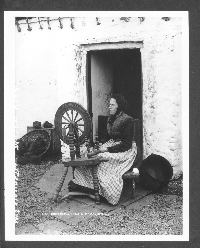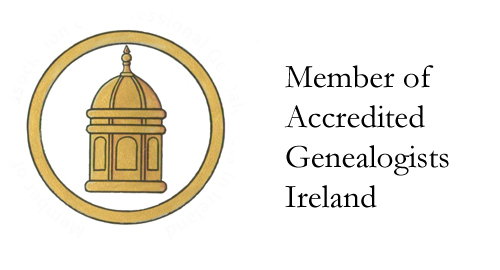Grenham's Irish Recordfinder
History
A large part of the day-to-day work of a professional genealogist in Ireland in the 1980s and early 1990s consisted of repeated consultation of the same reference works in the same order - find a townland, identify the civil parish, work out the Catholic parish, check the diocese, check the dates, order the microfilm. My first meeting with a database - Microsoft Works 2, in 1992 - was a revelation. It could all be done just once and would then be permanently available at the click of a button.
Doing it all just once was a tall order, and involved an awful lot of bleary typing. And inevitably, the possibilities multiplied: with the Townlands Index digitised and connected to the listing of Catholic registers, why not Church of Ireland Records? And Presbyterian records? And local histories, and gravestone inscriptions, and census substitutes, and estate records ...
This was well beyond the capabilities of MS Works, so I moved on to MS Access, then at Version 2. It was clear by now that what I was working on was more than a convenenient series of database pigeonholes. It was the basis of a full expert system. I stitched together a string of macros to interpret whatever a user knew about their ancestor, and then realised that a fully programmed approach was needed. So I taught myself Visual Basic for Applications, mainly by repeatedly banging my head against problems, and reprogrammed the entire thing. At this point, it became clear that the underlying database structure was all wrong. So I redesigned the database structure, and reprogrammed it all again. The learning curve was vertical.
By 1995, I had a fully-fledged stand-alone installable program, "Grenham's Irish Recordfinder", capable of taking whatever a user knew about an Irish ancestor and producing a formatted report detailing all the relevant sources, with advice, reference numbers, and locations. It was based on Access 2 runtime, had a Windows help system, and was distributed on no fewer than 21 floppy disks.
It was clear from the outset that, for the average researcher, the program was overkill. If your ancestors were Catholic tenant farmers from Cork, why would you want complete listings of all the Presbyterian records of Antrim? So it was aimed at libraries, societies and professionals like myself, and priced accordingly.
Subsequent versions moved the program to Access 97 and Access XP runtime and, thankfully, off the 21 floppies and onto CD-ROM. The contents also expanded, to include in Version 4.5, the last, Lewis's Topographical Dictionary of Ireland, with its maps, a surname dictionary, coats of arms, civil parish maps and a householders survey, showing the number of households of a particular surname in each of the civil parishes of Ireland.
The sale of the program on CD-ROM was discontinued in 2006, when The Irish Times version superseded it. The version on this site is now the master version, easy to update on a daily basis, and offering access for users to only the information they need, some subscription, mostly free.

